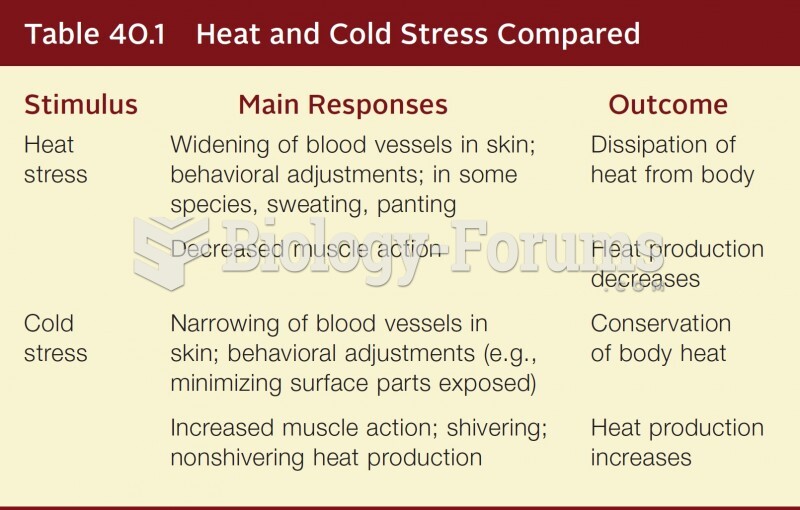|
|
|
Bacteria have flourished on the earth for over three billion years. They were the first life forms on the planet.
Nearly 31 million adults in America have a total cholesterol level that is more than 240 mg per dL.
In the United States, an estimated 50 million unnecessary antibiotics are prescribed for viral respiratory infections.
Automated pill dispensing systems have alarms to alert patients when the correct dosing time has arrived. Most systems work with many varieties of medications, so patients who are taking a variety of drugs can still be in control of their dose regimen.
It is believed that the Incas used anesthesia. Evidence supports the theory that shamans chewed cocoa leaves and drilled holes into the heads of patients (letting evil spirits escape), spitting into the wounds they made. The mixture of cocaine, saliva, and resin numbed the site enough to allow hours of drilling.







